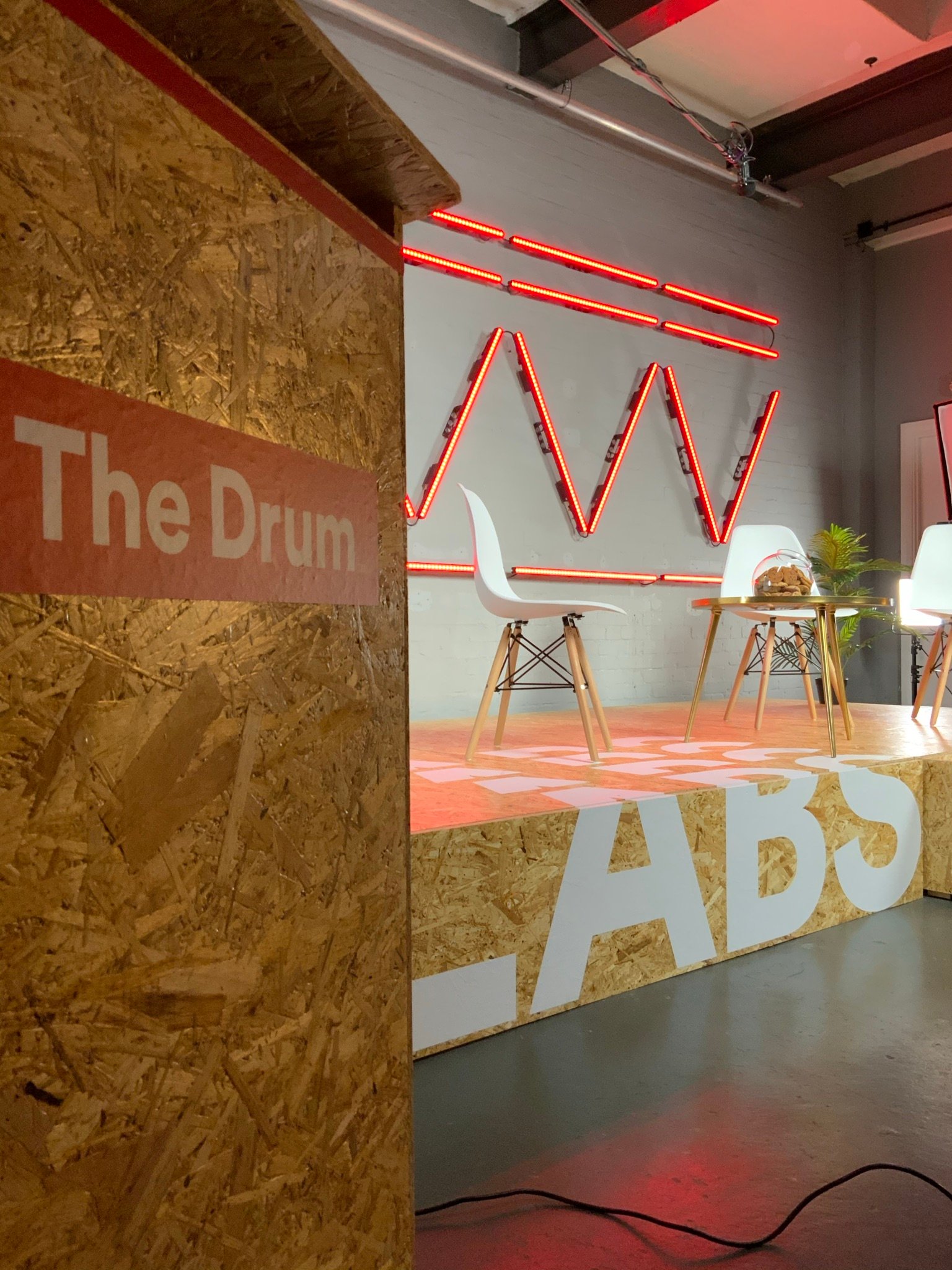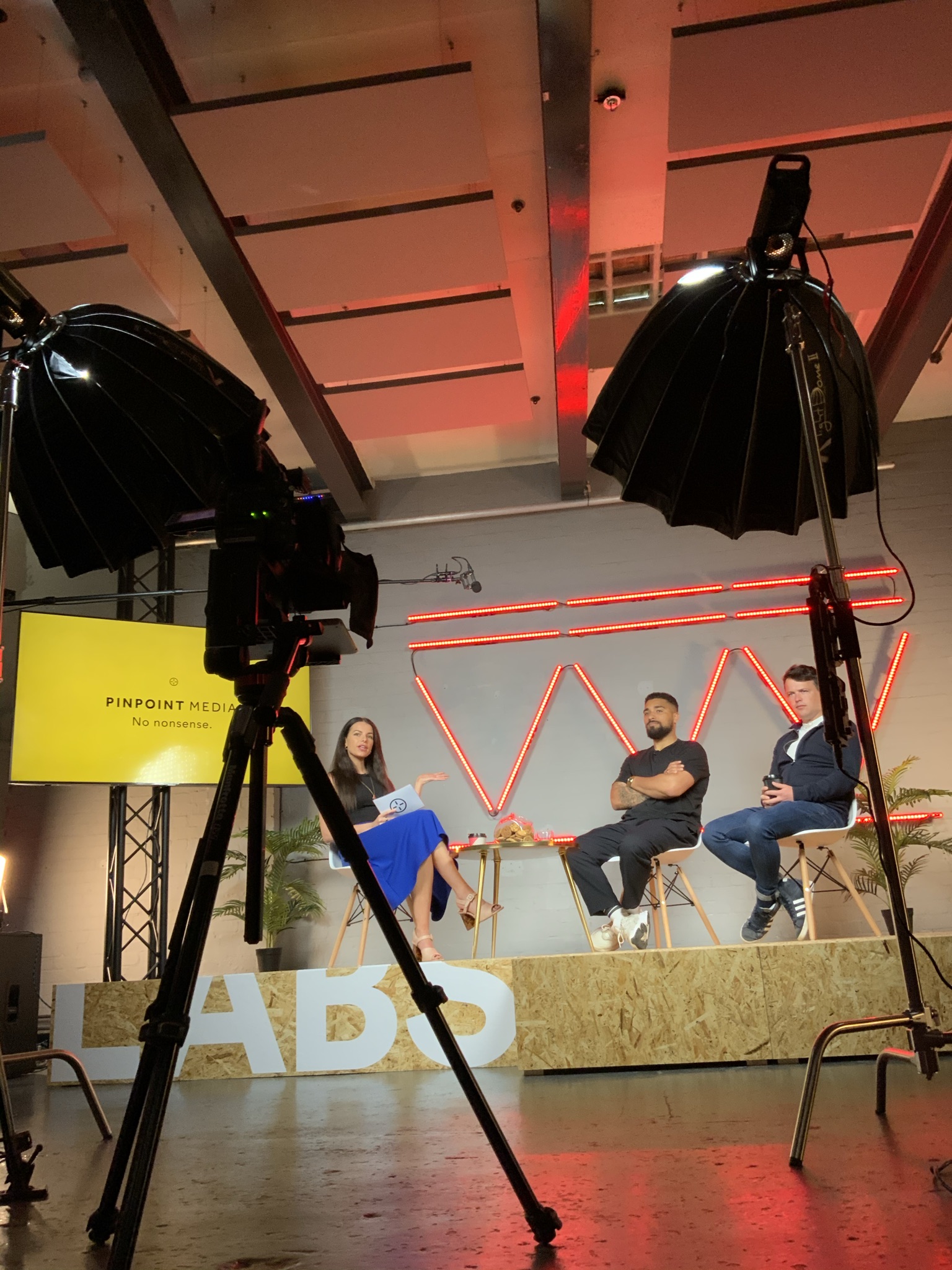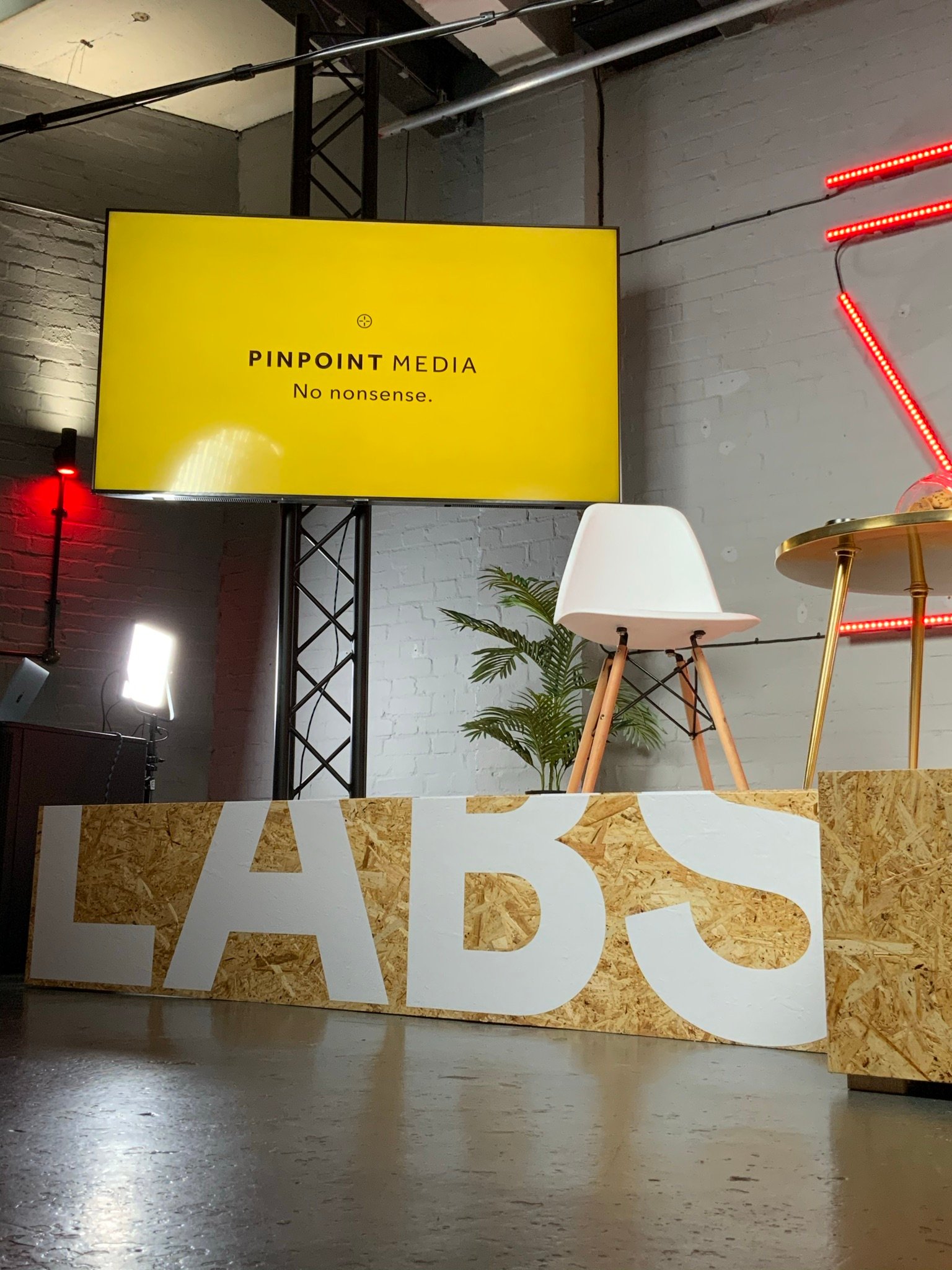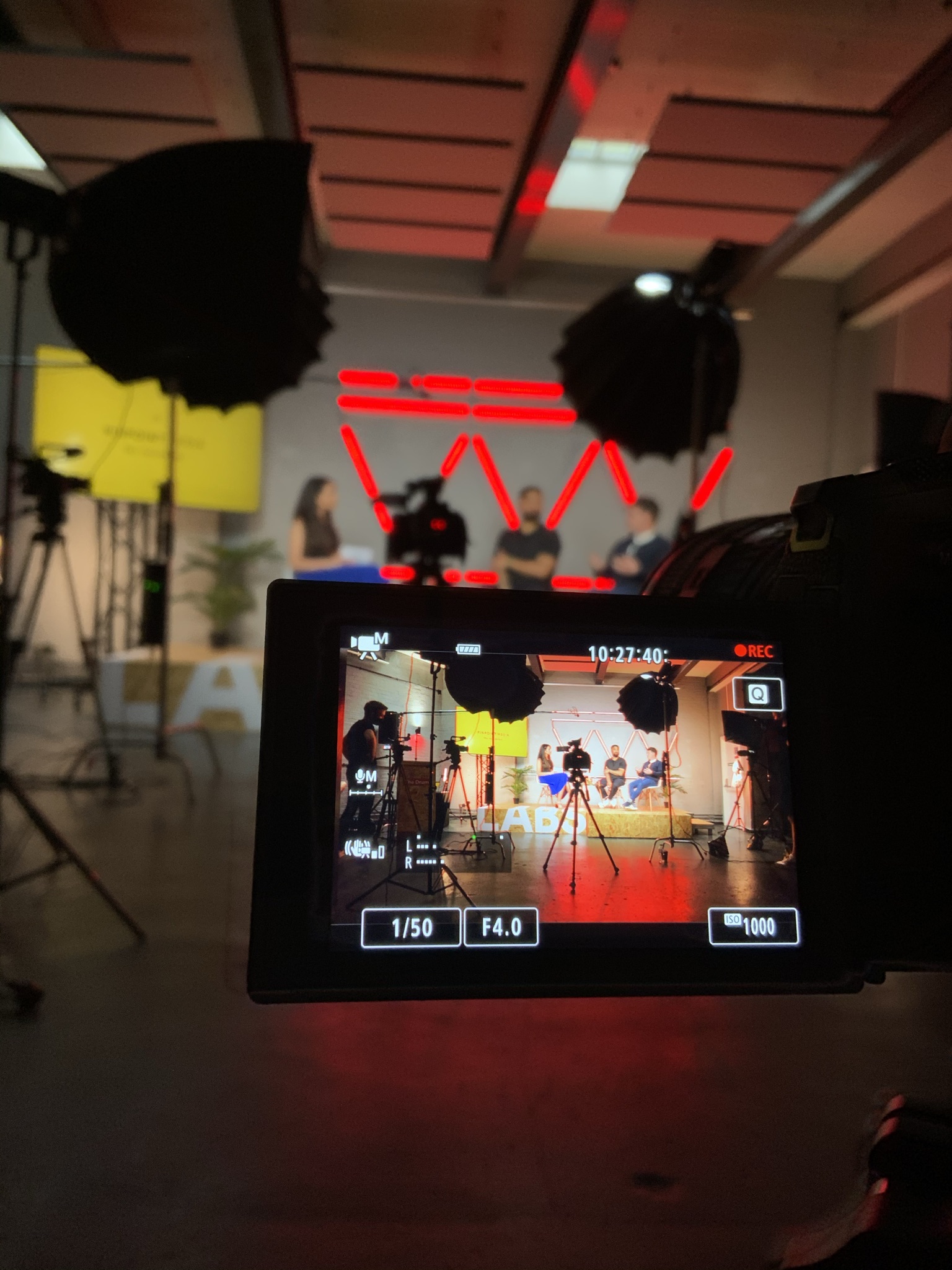Cookieless Content Strategies, The Solution
The biggest shift in the digital marketing world is upon us. With the rulebook changing what does this mean for your data, marketing and content strategy?
In this 15 minute session from the Drum's Creative Transformation Festival, PinPoint Media's Amy Green is talking to the experts, to explore why as cookies disappear, video is set to become vitally important when it comes to building engaged custom audiences on your social channels. Learn the tactics to ensure that you're ahead of the game in a cookie-less future!
Please note due to licensing, the TikTok clips are shown without sound in the above video. You can watch the full video with sound via The Drum.
Full Video Transcription
Amy Green: Hello and welcome to The Drum Creative Transformation Festival session on Cookieless Content Strategies, The Solution. I am Amy Green, business development and partnership director at PinPoint Media, a company that creates data-driven content for brands worldwide.
I'm joined here today with Tim Jarvis, head of strategy at PinPoint, and Jay Richards, founder of Imagen Insights. In this session we'll be discussing third-party cookies and why it's vital to get your content working hard for you as the digital landscape changes dramatically once again.
If you're in the digital marketing space, you would've heard about the changes that are afoot when it comes to third-party cookies and tracking on your website. So, before we talk through the opportunities and the route forward, let's speak to the experts about what the hell has happened and how we got to this place?
So Tim, what's changed from a cookies and privacy point of view?
Tim Jarvis: So, there has been a lot of talk around what's happened in the industry and privacy on websites and brands and companies owning data. So, what has happened recently is that Apple have given people the option to not be tracked in apps. So their behaviour on apps and on websites can't be tracked anymore, or they've been given the option to have it not tracked.
But also, kind of the big one is that Google have announced that this is coming in for Google Chrome as well. So, ultimately, brands who were using third-party cookies, so pixels and cookies on their websites, to see what people were doing on the websites and then being able to remarket to them back on social, now don't have the ability to do that.
Amy Green: Okay, and Jay, from your side, how has this affected Imagen Insights?
Jay Richards: So yeah, so it's a good question. So, Imagen Insights, our mission is to help Gen Z to shape the future. And then the best way for them to do that is brands 'cause brands are shaping countries and culture like many people only wish they could.
So what we do is, we enable brands to crowdsource qualitative insight from our community within 72 hours. So we have Gen Z all over the world that are on our platform and you can crowdsource that insight really, really quickly, which is great.
But going into the question, I think one of the interesting things is that really cookies hasn't really changed much for Gen Z. We've always been going straight to the consumer.
So, for us, it hasn't really affected us in any way because it hasn't really changed the dynamic of how we converse and how we engage with our Gen Z communities. It hasn't changed.
But what we've seen from brands, a lot of our brands didn't really make a plan. Not our current clients, but other brands that we've spoken to hadn't really made a plan for this future.
So now they're kind of at a moment where they're going, okay, what do we do now?
Amy Green: So the developments that are about to be effected, how is this gonna affect their marketing strategies?
Tim Jarvis: So, really, when you're talking about the marketing strategies, the big thing that it's gonna affect is retargeting. So, you're not gonna be able to know that if someone's gone onto your website, engaged with your app or listened to your podcast or whatever it may be, you then aren't able to retarget them back on social, because the brands, they're not gonna be giving each other that data.
So, that's the big change. But the way that it's gonna affect brands is, particularly with content marketing, is that when we talk through the buyer's journey, right. So, you've got the awareness stage, you've got the consideration stage, you've got decision stage.
Awareness stage is all about finding your audiences, serving them content and seeing if they engage with that. If they engage with that content, then you know that you can start to talk to them about the service that you provide or the product that you provide and the way that you're gonna help them achieve their own intrinsic goals, whatever they may be.
And typically, the old way of doing that was to be serving them content and sending them back to your website. If they come to your website, that's a pretty good sign that they're engaged with whatever you were talking about within that content. So, it was a real engagement metric.
But a lot of that audience growth and building your custom audiences now needs to take place on those platforms. And that's why video is so powerful because, typically, when you're setting up campaigns, particularly in the early stage, if you've got a campaign objective that's a conversion on your website, typically you'll be paying in the region of £5. It can go right up, depending on what your offer is per conversion. Or you can be paying £1 per link click, so traffic to your website which is quite expensive.
But that's where video now is even more important because when you're building your custom audiences on video views, so if someone's watched your video to 75%, they're pretty engaged. They wouldn't have hung around and watched that content if they weren't engaged or something wasn't resonating with them.
But the price of a video view, it can be half a penny for an engaged video view. So, you're now able to build those massive, massive audiences of engaged prospects. And granted, you're not gonna be able to get, or you don't wanna send them straight back to your website, but because they're engaging with that content you're able to understand what their drivers are, if they're engaged, if they're right for your product or service, and then you can start to take them on that journey and then take them to your website when they're ready for conversion. And that conversion might be a lead. It might be an inquiry. It might be a purchase if it's E-com. But that's where we're shifting things and that's where the shift is probably gonna take place for lots of brands.
Amy Green: Okay, so it definitely shows that video is gonna be vital moving forward. It used to be that we looked at brands and how we can get those audiences, and we used to believe that people buy into people. So, a lot of the time we'd look at influencers to bring their audiences to the brands.
Do you feel by using these videos, the behind-the-scenes videos, that it actually allows all generations to really buy into the brand itself, how the brand is used, rather than using those influencers per se?
Jay Richards: Yeah, I think it's a great opportunity. It's like we were saying at the start, the good thing about the removal of cookies and Apple removing their tracking is the fact that brands now have to go, hey, we need to be front and centre.
And we were speaking to an FMCG client the other day and we were saying, even when we do a partnership, when you're doing a partnership with another brand, your brand needs to be front and centre.
And I think that's the key thing that we're seeing, that Gen Z, and all generations actually, they wanna be engaging with that brand. They wanna see even the team behind the campaign, they wanna see the marketing director. They wanna see some of the junior level employees actually engaging on TikTok and providing content.
Because for the Gen Z and for the consumer, in general, they wanna see as I was saying earlier, that holistic view of the brand and fall in love with the entire brand, and I think it's a great opportunity to do that.
Amy Green: You see that a lot now with Gymshark, they'll have their head of brand coming forward and he's kind of their own influencer away from all of the sports people in the industry.
And like you say, the same with PrettyLittleThing and some of the other brands. So, it is a great way for them to build that audience.
Tim Jarvis: I think it’s a good point though. But I think- but I don't think influencer marketing’s going anywhere. Influencer marketing is obviously used to bring new audiences into that brand.
But I think the point here is that once they are in, once you've utilized those tools and you've brought a new, fresh audience in, you've got to keep them engaged. Because the amount of content that's being produced, as you go through TikTok and you go through all these other channels, there's so much out there but you've got to keep their attention, and that's why that engaging content is so important once they get into that journey.
Jay Richards: Yeah, and I think a key bit off the back of that is, and I love the idea of you saying influencer marketing isn't dead and I think it's a great opportunity for brands. And I think the key part of it is, is understanding what people want to see. I think historically as brands we've gone, you know what, we know what they wanna see. We'll create this and they'll love it.
And influencer marketing slightly changed that because we put the power in, technically, one of our consumers' hands, even though it was an influencer. We put the power in their hands and allowed them to tell the story of the brand in their own way.
And I think now it's even shifting more, and this is what we're really passionate about at Imagen Insights, is engaging with your end consumer and asking them, hey, tell us in a qualitative way what you want to see from us? What do you wanna see from us as a brand? And then we're just gonna do what you tell us to do.
And then over an extended period of time that will change 'cause what they wanna see in January will be different to what they wanna see in March. And I think as a brand, it's an opportunity to continuously engage with the consumer, whether that's Gen Z, Millennials, Boomers, whoever it is, engage them continuously over an extended period of time. So you can build that brand up, but also you can say, what do you want us to do? And you can just do that.
Amy Green: Well, it's so important, isn't it, that brands are actually talking to their audiences on these social platforms now, because they've got the opportunity for them to be able to listen and speak and answer questions, but also to look at what their competitors are doing, and how their audiences are talking to their competitors, because if their competitors have done then something wrong, they can learn from their mistakes quicker. Whereas before, you didn't have the time to do that.
Since we've been talking about these lovely behind-the-scenes and TikTok, let's go and have a look at some of the trends that are hitting TikTok at the moment.
♪ This next part's my favourite part ♪
♪ 'Cause it's time to shine ♪
♪ Gon' and do the two-step, then cowboy boogie ♪
♪ Grab your sweetheart and spin out with 'em ♪
♪ La-la-la-la-la-la-la-la-la-la-la-la-la-la-la-la ♪
♪ La-la-la-la-la-la-la-la-la-la-la-la-la-la-la-la ♪
♪ I'm a young soul in this ♪
♪ I need to know ♪
♪ Could you be the one to call when I lose control? ♪
♪ Ah, ah-ah-ah-ah, ah, ah-ah-ah ♪
♪ I need your love ♪
Jay Richards: So, the funny thing is about those videos is that 10 years ago there was no way we ever would have dreamed of a brand showing behind-the-scenes content like that.
Amy Green: No, never.
Jay Richards: It would've been like, no, this is terrible. It's against the brand guidelines, so on and so on. But the great thing about Gen Z is that they love that.
And you'll notice the songs in the background almost don't match with actually what's happening on the screen. You'd expect it to be like, I dunno, a classical pianist piece. But it's not. It's really songs that almost jar with the content itself.
The key thing is, is you're showing the behind-the-scenes process. You're showing people really engaged with what they're doing. I watch it all the time.
Amy Green: Yeah, same.
Jay Richards: Makeup, I've never worn makeup in my life but I will sit there and watch it being made for hours on end.
Tim Jarvis: But this is why it's so important as well. Bringing this back to cookies, any engagement on this type of content is a clear sign that these guys are engaged with your brand or your product, and that's the stuff that we need to be tracking and building those audiences of.
Amy Green: It's just great transparency for the brand as well, isn't it?
And you can see that the music is stuff that's trending now. So, if you just look at any kind of dance TikTok videos or on Instagram as well, and the same on Facebook, you can definitely see that they're the trends that are coming through. And I think because it's using music that people are hearing every day, it's hooking people, rather than having the piano music, like you say, which just wouldn't be as engaging.
Okay, so what should brands and marketers be looking for as this disappears then? So, we've discussed the video, but from a strategy point of view, what else should they be looking for?
Tim Jarvis: I think the biggest thing here is just to truly understand your audience. If you don't know your audience, you don't know what content needs to be created. Like it is clear that more content is required. And not just for Gen Z, right, this is across all of the generations.
It might just be different channels that we're publishing this to and we're promoting this on. But if you truly understand your audience, you then understand what content they wanna be engaging with, what's gonna resonate with them. That's the biggest takeaway for me.
Because if you do that, you are then able to create that content that maybe your competitors don't, that they don't have and they're focusing too much on the sale or the end point or the end goal. Whereas you can start to build those audiences and it's not about clicks back to the website anymore. It's about getting people to engage with your content in the platforms that they enjoy spending time on because that's where they are.
And if they're engaging, as I said before, you can then start to say, yes, they're engaged with that content. They're right for my product or my service. I can then start to serve them more solution-led content, educational content, and then obviously the sales content when you get to that stage.
Amy Green: As we know, content is king. So, what else are they gonna be losing from their strategy?
Tim Jarvis: I don't think anything really needs to drop. It's more the places in which that content is gonna be published. So, written word is still gonna be right for people who enjoy written word, but it needs to be published in a place where you can track that engagement, if that's what your campaign goal is, right.
So, again, video, you're still gonna be creating video but you're gonna be putting that in a different place. Photography, graphics, images, like voice, like this stuff it's still content and content is still required to get this engagement. It's just where you're publishing it that's gonna be slightly different.
Jay Richards: Yeah, and literally, I couldn't put it better myself. And I think the interesting thing is that we need to learn from the mistake we made with cookies and with tracking. With that it was, this is everything. We're gonna put all in on this and this is what matters. And we kind of left the other bits behind and we didn't really do...
I spoke to some huge brands recently and they're kind of like, our consumer research, if we're being honest, it was terrible over the last decade because we just solely relied on these things to track. And I think the exciting thing about this is that it gives us an opportunity to do all of these things still, but just to do them well. We don't have to drop anything. We can just say, okay, you know what, we're gonna, like Tim was saying earlier, ask people what they want and then give them what they want and not actually just trying to think we know everything ourselves.
And just be humble enough to ask people what they want to see and engage in that. And that, again, can be on all the different platforms at all different times.
Amy Green: Okay, perfect. So, to recap, can you both give me three things to take away for our audience today?
Tim Jarvis: So, first thing, truly understand your audience. I think that's the biggest thing, really understand what content they want to be engaging with or what you know they will engage with.
The second thing is target them early, and build your custom audiences off engagement through video because it's cost effective and it's powerful and that's a real clear sign of engagement if they're watching 75% of that video.
And the third thing, when you're at that conversion stage, just make sure that it's the right time to be able to collect that data and get them into your database.
Amy Green: Thank you, Tim. Jay?
Jay Richards: I think first for me it would be, have a conversation. So, have a conversation with your consumer. Don't allow it to be, and I love quant data, people always hear me banging against quant data. I'm not banging against it but I think qual data for me is so powerful because you actually get to hear the voice behind it. So, whether that's videos from the consumer or written insights from the consumer, you need to ask them what they want to see so you can do what they want.
And the second thing is really just double down on what you're actually good at. I think sometimes we try and spread ourselves too thin; too thin across too many platforms. And I think there's a great opportunity now to go, okay, where are we performing well and where can we double down on?
And that, again is, actually taken from what your consumers are saying. 'Cause if they're saying, hey I love engaging with you on TikTok or Instagram but I don't really engage with you on Facebook, then you can maybe say to yourselves, okay, we're gonna focus on that.
And then the third thing is when you've done those first two, it's just be committed to that in the long run. I think the problem is is that we do something for a quarter. Oh, we had a boost in sales and then we stop. And then we do something else in the next quarter and we have a boost in sales and then we stop.
And I think if as brands we can begin to see the power of longevity and we can see the power of brand building, brand loving over an extended period of time, but also just sticking to a specific strategy for an extended period of time, we will see the win in the end and it will be great in the long haul and not just in the short term quarters.
Amy Green: Consistency is key. Jay and Tim, thank you so much for joining me today. It has been extremely insightful.
And that's it, thank you all very much for tuning in to find out about why video is imperative to a cookieless future. Thank you to my guests, Tim Jarvis and Jay Richards for joining me.
You can see this content and others at thedrum.com/creativetransformationfestival
And you can tweet us at #CTFest
Thanks again, and bye for now.





